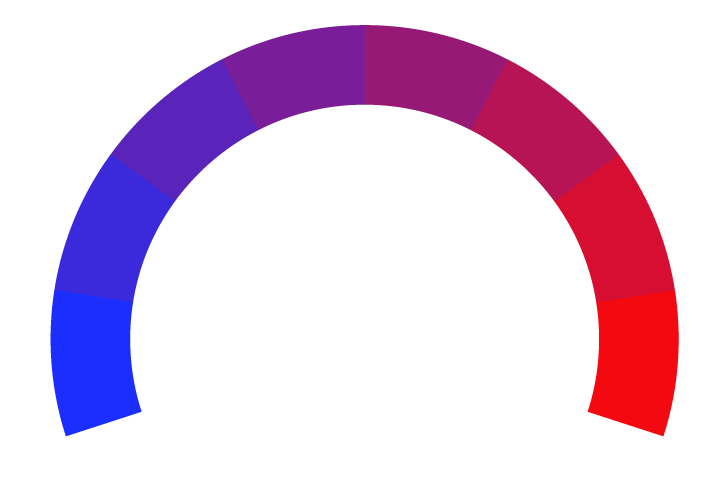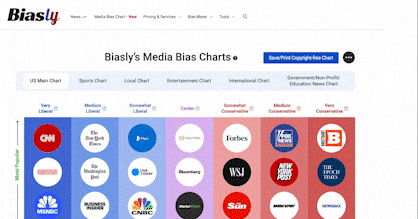GOP bill could add trillions to the U.S. deficit, some experts say. Here's what to know.
- Bias Rating
- Reliability
95% ReliableExcellent
- Policy Leaning
10% Center
- Politician Portrayal
-60% Negative
Continue For Free
Create your free account to see the in-depth bias analytics and more.
By creating an account, you agree to our Terms and Privacy Policy, and subscribe to email updates.
Bias Score Analysis
The A.I. bias rating includes policy and politician portrayal leanings based on the author’s tone found in the article using machine learning. Bias scores are on a scale of -100% to 100% with higher negative scores being more liberal and higher positive scores being more conservative, and 0% being neutral.
Sentiments
-13% Negative
- Liberal
- Conservative
| Sentence | Sentiment | Bias |
|---|---|---|
Unlock this feature by upgrading to the Pro plan. | ||
Reliability Score Analysis
Policy Leaning Analysis
Politician Portrayal Analysis
Bias Meter
Extremely
Liberal
Very
Liberal
Moderately
Liberal
Somewhat Liberal
Center
Somewhat Conservative
Moderately
Conservative
Very
Conservative
Extremely
Conservative
-100%
Liberal
100%
Conservative

Contributing sentiments towards policy:
51% : " The concern, according to both Wall Street economists and policy experts, is that adding billions in debt to the U.S. ledger could eventually squeeze federal spending because the nation would likely face higher interest payments.51% : Even including savings from tax cuts, the bottom 20%, who earn up to $17,000 per year, would take a $1,035 hit in 2026 after the reductions in Medicaid and other programs are factored in.
50% : Some House Republicans also want to more quickly end tax breaks for green energy projects being used nationwide.
50% : " The lowest-income Americans would end up paying more under the proposed GOP bill, according to a May 19 analysis from the Penn Wharton Budget Model, a University of Pennsylvania group that studies the fiscal impact of public policies.
49% : Over the next decade, the GOP bill could cost the U.S. $3.8 trillion, according to a report earlier this month by the Joint Committee on Taxation that examined the impact of the the tax measures versus spending cuts.
48% : " At the heart of the proposed GOP bill is President Trump's vow to renew his 2017 Tax Cuts and Jobs Act, which introduced lower tax brackets for many Americans.
48% : " "Over the next decade, we expect larger deficits as entitlement spending rises while government revenue remains broadly flat," Moody's said on Friday when it became the third major rating agency to cut the nation's credit rating.
47% : She added, "Our federal interest payments are skyrocketing, already surpassing what we spend annually on defense or Medicare.
46% : Renewing the law's cuts alone would cost $2.2 trillion over the next decade, estimates Joint Committee on Taxation, which assesses the impact of policy for Congress.
46% : "[H]ouseholds most affected by the cuts to Medicaid and SNAP -- those in the bottom income quintile -- experience the largest losses under this bill, averaging $28,000 in lifetime value for the working-age population," the Penn Wharton Budget model calculated.
45% : That, in turn, could make it more difficult to fund programs like Social Security, which is already facing a financial drawdown as baby boomers hit retirement age, or to invest in initiatives like infrastructure that can spur economic growth.
43% : House Speaker Mike Johnson acknowledged there are still details to "iron out" as conservative Republicans seek to quickly enact work requirements for able-bodied participants in Medicaid.
23% : " The Trump administration said it disagreed both with the Moody's analysis and forecasts that the legislation could widen the nation's deficit, which is the gap between federal spending and revenue.
*Our bias meter rating uses data science including sentiment analysis, machine learning and our proprietary algorithm for determining biases in news articles. Bias scores are on a scale of -100% to 100% with higher negative scores being more liberal and higher positive scores being more conservative, and 0% being neutral. The rating is an independent analysis and is not affiliated nor sponsored by the news source or any other organization.






















 CBS News
CBS News